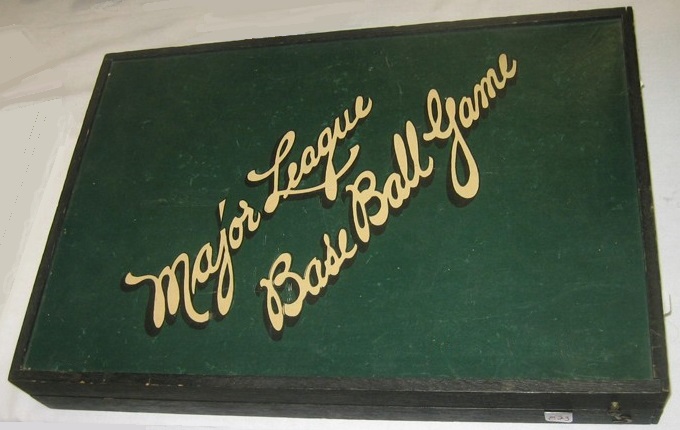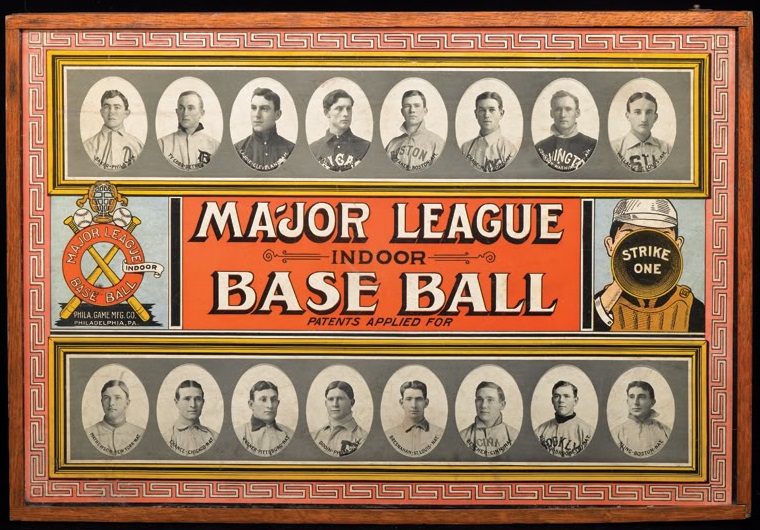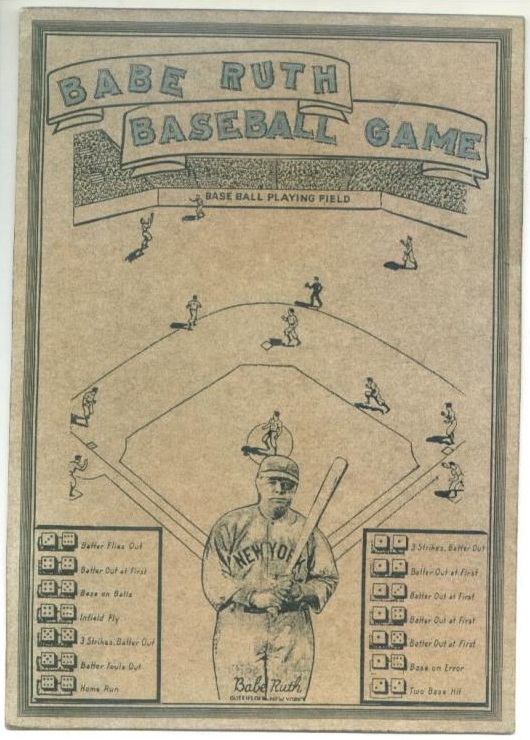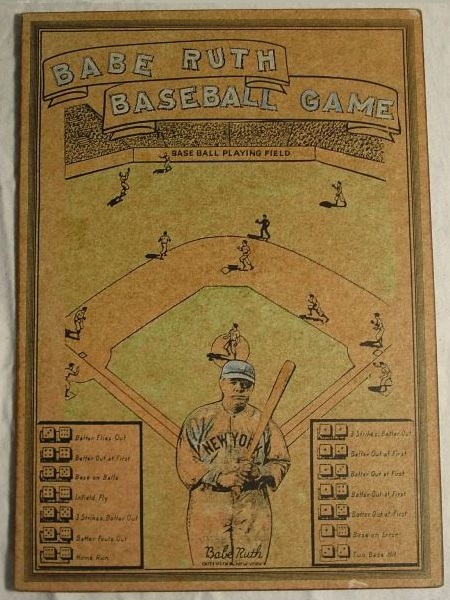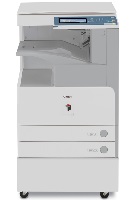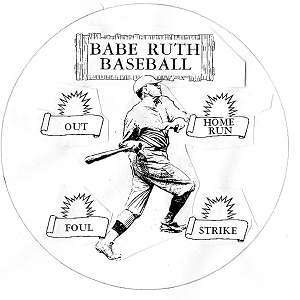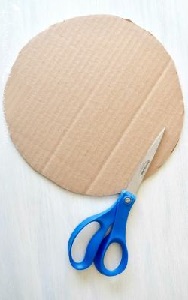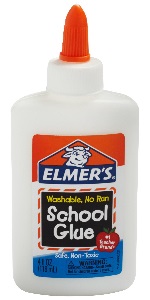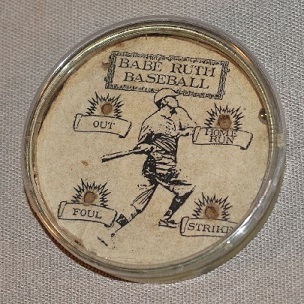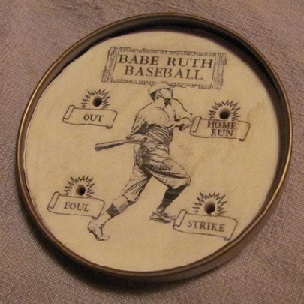Artificial turf, counterfeit money, fake noses, fake moustaches, fake... um... other body parts... and... fake baseball games?
All of them are out there, and while some of those things may in varying degrees provide some entertainment value (some of them
obviously more than others), there's nothing funny or worthwhile about fakes and fraud in our quiet little backwater of a hobby.
Every genre of collectible antiques -- art, silver, glass, furniture, sports memorabilia, you name it -- is plagued at least occasionally
by fakery and fraud. Sometimes it begins innocently enough, with reproductions or knock-offs made for sale as such to collectors who
can't afford the often exorbitantly priced originals, but which wind up being offered for sale as originals, by dealers who may themselves
be ignorant of their wares' repro origins, or in too many cases by unscrupulous dealers fully aware that what they have is not the real
McCoy.
The relatively young but explosively expanding hobby of sports memorabilia collecting is fraught with fakery, particularly in the area
of vintage baseball cards. Happily, the tabletop baseball game hobby has been relatively free of these sorts of shenanigans. Board
games, with their many parts and pieces, are a complicated, labour-intensive thing to reproduce -- and few games command prices
high enough to justify the time and trouble of faking one. Unfortunately, there are exceptions.
Multiple examples of at least twenty different baseball cards have sold on multiple occasions for more than $100,000. each,
topped by the famous circa 1910 T206 Honus Wagner, with dozens of other cards regularly selling for more than five figures. The
astronomical prices earned by the most desirable baseball cards extends to a handful of old baseball card games and individual cards
from those sets. The cards by themselves are fairly easy and cheap to fake -- monochrome images on pasteboard -- and even without
their boxes and other playing pieces, the originals are much in demand among well-heeled card collectors as well as game collectors.
It often takes an experienced eye to discern the difference between one of these antique game's original cards and a modern
reproduction meant to deceive a gullible buyer. Collectors should be wary and well informed when considering the purchase of cards
purporting to originate from the 1906 "Art Series" editions of Fan Craze (designated "WG2" and "WG3" in the American Card Catalogue),
1913's Base Ball ~ The National Game ("WG5"), the Tom Barker Baseball Card Game of 1914 ("WG6"), All Star Card Base Ball from
1914 ("WG4," known to card collectors as "the Polo Grounds game"), the Great-Mails Baseball Game of 1923-24 ("WG7"), and The
National Game ("WG8") of 1936 made by S&S Games Co. Complete sets of each of those games routinely fetch four figures at auction,
in many cases well more than five, with some individual cards from some of those games frequently going for well over $1,000. by
themselves. There are other, even older, baseball card games with comparable market value, but those cards are elabourate,
multi-coloured affairs, much more difficult to reproduce and their reproductions easier to detect. Have some hands-on familarity
with examples from these sets, and buy only from a trustworthy source, if you're thinking of forking over a substantial sum for
any of those, or for any high-priced baseball card. The card hobby is infested with sophisticated fakery. We recommend the
collecting community at Net54 for both a primer and advanced details on what to look out for and beware of.
Four Wagner cards from five different sets: |
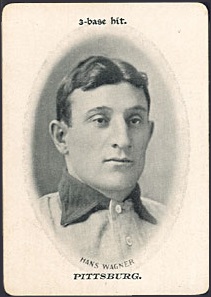 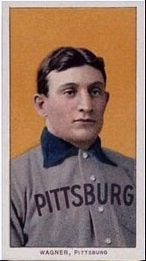  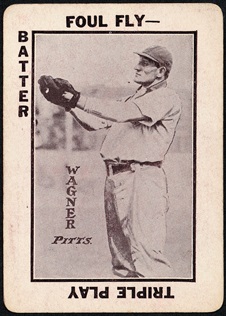 |
Wagner appears in, left to right, Fan Craze (1906), the T206 series of tobacco cards (1909-11), All Star Card Base Ball (1914),
and, at far right, the nearly identical Baseball ~ The National Game (1913) and Tom Barker Baseball Card Game (1914). |
Honest reproductions of baseball card games are usually marked as such, and in their own original form are not to be lumped in with
outright fakes. Larry Fritsch Cards has for years been producing honest, handsome repro sets of many of the games cited above, but
scammers have often tried to palm them off as originals, usually after altering the cards to erase printed evidence that the cards were
latter-day reproductions.
Card backs from original and repro editions of Baseball ~ The National Game: |
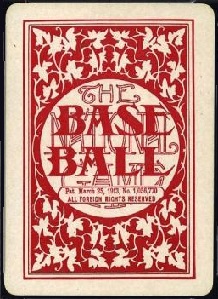 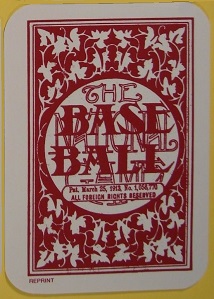 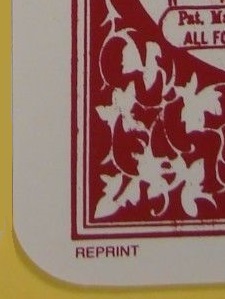 |
Left to right, card from original 1913 set of Baseball ~ The National Game ("WG5") made by National Base Ball
Playing Card Co, card from 21st-century repro set by Larry Fritsch Cards, and detail from Fritsch edition,
forthrightly identifying card as "reprint." Note also the diagnostic difference in the corner shaping. |
 |
Batter Up Baseball Card Game, Ed-U-Cards' 1949 original version
(shown at far left) of their hugely popular 1957 Baseball Card Game,
was reprinted by an unidentified entity sometime in the late 1990s
or early 2000s. Nearly identical to the original in almost every other
detail, the repro version (near left) is easily identified by the absence
of the small print indicating "trade mark" just below the game's title
on its flip-top box, and of course by the presence of the UPC bars on
the box's bottom flap.
|
 | Another repro often mistaken for the original
is Schylling's 2001 remake of Baseball Pinball
Game. Although there are significant, obvious
differences between the boxes and backsides
of the remake and the game produced around
1960 by Marx, both are freqently offered for
sale on-line without the box or without photos
of the backside. The Marx game, seen at left,
displays "Base Ball" in a font divided by a
red hairline, nine stanchions supporting the
"warning track" scoring area, and averages
about $15.-$20. at auction. The Schylling
repro, at right, has "Base Ball" in a subtly
different font decorated with blue dots, six
outfield stanchions, and averages about $5.
at auction.
|
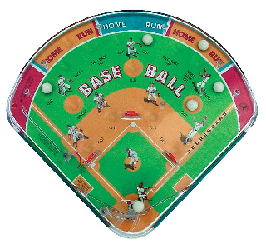 |
Here's some garbage that made us do a double-take and had us briefly beflustered, but which quickly revealed itself as totally bogus:
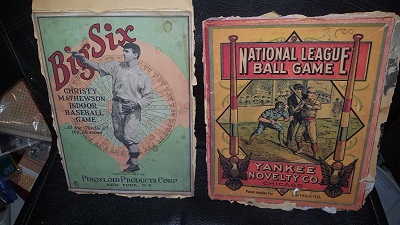  These fake antique game-box lids showed up on eBay in January 2018. The least little bit of research would have demonstrated that
they are not authentic. All anyone needed to know was that an original Big Six box is a big 22 1/2 x 16", while an original National League
Ball Game box is a just slightly smaller 5 1/2 x 4 1/2". The second pair displays similarly wild inconsistencies in size, and several other
details in all four lids make it further inarguable that all four are outright fakes. Yet someone deluded themselves into paying more than
$320. for this set of worthless decorations. Well, okay, as decorative pieces, not entirely worthless. Maybe eight or ten bucks for the set.
These fake antique game-box lids showed up on eBay in January 2018. The least little bit of research would have demonstrated that
they are not authentic. All anyone needed to know was that an original Big Six box is a big 22 1/2 x 16", while an original National League
Ball Game box is a just slightly smaller 5 1/2 x 4 1/2". The second pair displays similarly wild inconsistencies in size, and several other
details in all four lids make it further inarguable that all four are outright fakes. Yet someone deluded themselves into paying more than
$320. for this set of worthless decorations. Well, okay, as decorative pieces, not entirely worthless. Maybe eight or ten bucks for the set.
|
One disturbing, if not terribly costly, development was a reproduction set of
Harry's Grand Slam Baseball Game, originally made in 1962 by the Olympic
Card Company. Heirloom Games and Out Of The Box Publishing turned out
a rather too-faithful repro set of the 1962 original in 2005, unfortunately
declining to mark anywhere on the cards or the box that it was a repro. The
two versions are identical in every respect, so the repro is indistinguishable
from the original. The lone and feeble upside to the situation is that neither
original nor repro generally sells for more than about $10.-$20. Presumably
well-intentioned in reviving the obscure Harry's, Heirloom / OOTB gain no
advantage beyond basic sales from having made the duplicates, but it was
grossly irresponsible of them to make the reprint identical to the 1962 issue.
Uninformed or unscrupulous vendors frequently peddle the repro issue as
"vintage," and as a result, the market value of the original has nose-dived.
At right, a complete example of Harry's -- an authentic 1962 original,
or a 2005 reproduction? We can't tell, and neither can you.
|
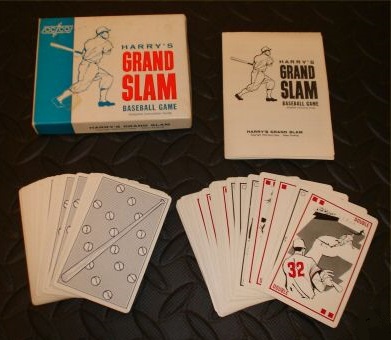 |
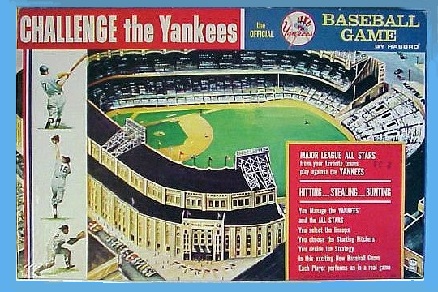 | At left, the potential subject of exactly the same problem,
but on a much grander scale -- Challenge the Yankees,
originally published by Hasbro in nearly identical 1964 and
1965 editions. One of the most avidly sought post-War
games, collectors have paid, over the past fifteen years,
an average of more than $600. for examples, several times
going well into four figures, many of those games less than
complete and most in somewhat distressed condition.
The game's designer, Roger Franklin, retained the rights
to his creation, and his family announced in 2017 that they
would be producing a repro edition of "CTY" -- faithfully
identical to the original Hasbro issues, with no markings
whatsoever to distinguish the new games from the 1960s
originals. Arguably, Franklin has (and should have) the
right to do whatever he wants with his brainchild, but had
the project proceeded as described, it would have been a
major disservice to the hobby -- an insult to collectors who'd
made a major investment in the original editions, and an
open invitation to rampant fraud. Fortunately, crowdfunding
efforts to launch the imitation fell short of their goal, thanks
in no small part to their marketing department's arrogant,
smugly dismissive attitude toward criticisms and suggestions
from the very community they'd targeted as their customers. |
A full-fledged boardgame vulnerable to ouright fakery is Major League
Indoor Base Ball, produced by Philadelphia Game Mfg Co in 1912 and '13.
A second edition of the game, retitled Major League Base Ball Game, was
turned out from 1913 through 1926. The two editions are virtually identical
but for their box lids, and therein lies all the difference. Both games are
beautiful, sturdily-built things, both of them in demand among collectors.
But while nicer examples of Major League Base Ball Game, with its
relatively plain dark green cover, have averaged just under $300. through
dozens of on-line sales and auctions over the last fifteen years, examples
of its predecessor, Major League Indoor Base Ball, in similarly nice
condition and sporting its elabourate colourful cover featuring Carl Horner
portraits of sixteen star players of the day, have averaged $3,100. over
that same span. Although the difference would be evident at a glance with
a hands-on examination, it would be a simple matter for a scam artist to
slip a photocopy of the Major League Indoor Base Ball cover into the lid
of a Major League Base Ball Game box and produce a convincing photo
for an on-line auction. We've seen it attempted.
Below, the box lids of Major League Base Ball Game and Major League
Indoor Base Ball; at right, the dazzling interior of either version, showing
the hinged wooden box, the ornately illustrated gameboard / playing field,
the enormous chrome spinner, roster strips, and the twin parts boxes
holding marker pegs and other game paraphermalia. | 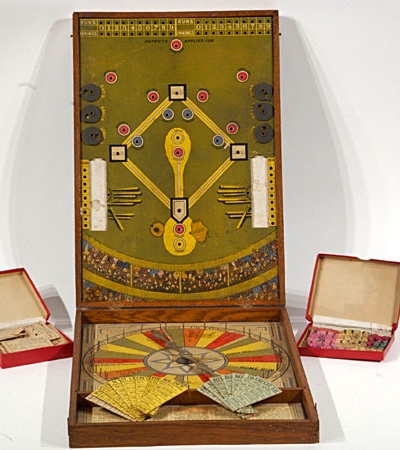 |
This brings us to a whole series of closely-related fakes that prompted this article in the first place. These are all what are known
in the hobby as "fantasy pieces" -- modern-day creations masquerading as antiques that never actually existed. We first saw one from
this particular series in 2004, and it and several spin-off variations have been popping up every few years ever since. They're all clearly
the work of the same hand, they're all inevitably billed as hailing from the 1920s or '30s, and they're all screamingly obvious as fakery.
In the perp-walk below, we'll identify several varieties of a little horror calling itself "Babe Ruth Baseball Game". At least seven elements
of the game board, seen below at right, frantically wave red flags and sound claxons to alert one and all that it's unequivocally a modern
fantasy piece.
The most obvious points are the illustrated playing field and dice-combination results, both of which are photocopied from either one of
two popular Parker Brothers baseball games shown below, top left -- the 1948 edition of Double Game Board, or the identical board from
their 1957 edition of Baseball Football and Checkers. The Parker games are plentiful and relatively cheap to obtain. The rearranged
table of dice combinations, showing the diagnostic shadowed dice and professionally handwritten italic font of the Parker boards, is
laughably switched around, placing the last third of the 21 possible results first, the first third last, and omitting the middle third -- 2/3, 2/4,
2/5, 2/6, 3/3, 3/4, and 3/5 -- entirely. In contrast to the lettering in the results table, the letters in the banner giving the game's title are
crude and amateurish. The image of the Babe himself is an iconic one, well known to collectors from a late 1920s "exhibit card," easily
available on-line or in any number of books. The signature printed across the bottom of the image is not an autograph, but displays
as printed on the exhibit card, which used the same font for all 69 cards in the set. The overall image shows the black-&-white
"posterization" effect due to photocopying a grey-toned photographic image. Lastly, it's worth noting that Parker Brothers' company
records show no evidence of their ever having produced any Babe Ruth game, nor of ever having licensed the mechanic or graphics of
Double Game Board to any other manufacturer.
Three other variations of this board have been spotted: that shown
above at lower left adds colour to the Babe's cap, sleeves, and bat,
that above at lower right to the entire board, and that directly at right
provides an enhanced city skyline and a new rearrangement of the
dice results on a longer board, along with a ludicrous publisher credit
and more artificial aging (some deliberate crumpling, a few tea stains,
and gently baked in an oven to a delicate golden brown). All three
above measure roughly 13.5 x 9", the fourth at right about 18 x 9".
Subtle differences between each version, in colour coverage in the
title lettering and in the Babe's cap, along with the apparent lack of
half-tone printing dots in the colour areas, strongly suggest each
version was coloured by hand, which would rule out any possibility
these were mass-produced in even very limited quantity by any real
game publisher -- let alone by McLoughlin Brothers, as the credit line
at the bottom of this variation would have us believe. McLoughlin
were the pre-eminent publishers of boardgames through the second
half of the 19th century, finally eclipsed by 19th-century rivals Parkers
and Milton Bradley as the 20th century dawned (our history of the
company and their dozens of graphically gorgeous, painfully simplistic
baseball games is here). It's obviously impossible for Parkers' 1948
graphics to have appeared on a pre-1920 McLoughlin game. And
while McLoughlin did have a printing factory in Brooklyn, their main
offices were always in Manhattan, and whenever their games carry a
city-of-origin credit, it's always "New York" or "N.Y.," never "Brooklyn."
We'd long hypothesized that the first three fake "Babe Ruth" games
we've shown here were never intended to fool anyone or to defraud a
na´ve buyer, but were, instead, nothing more than a design project by
some high-school or middle-school art student, which escaped into
the wild in a yard sale, and eventually were put up for sale on-line by
uninformed vendors.
However, the McLoughlin credit on the fantasy piece at right, which
turned up at a major auction house in 2013, gives us pause. Parker
Brothers and Milton Bradley remain household names, so if some kid
was going to add a publisher credit to their little art project, one of
those two famous companies, or no credit line at all, would seem to be
a likely choice. Somebody would have to have some solid knowledge
of collectibles and antiques, though, to know anything of McLoughlin
Brothers, which in turn sort of presupposes some awareness of the
high prices paid for McLoughlin products, and that makes the item
at right a little bit suspicious...
| 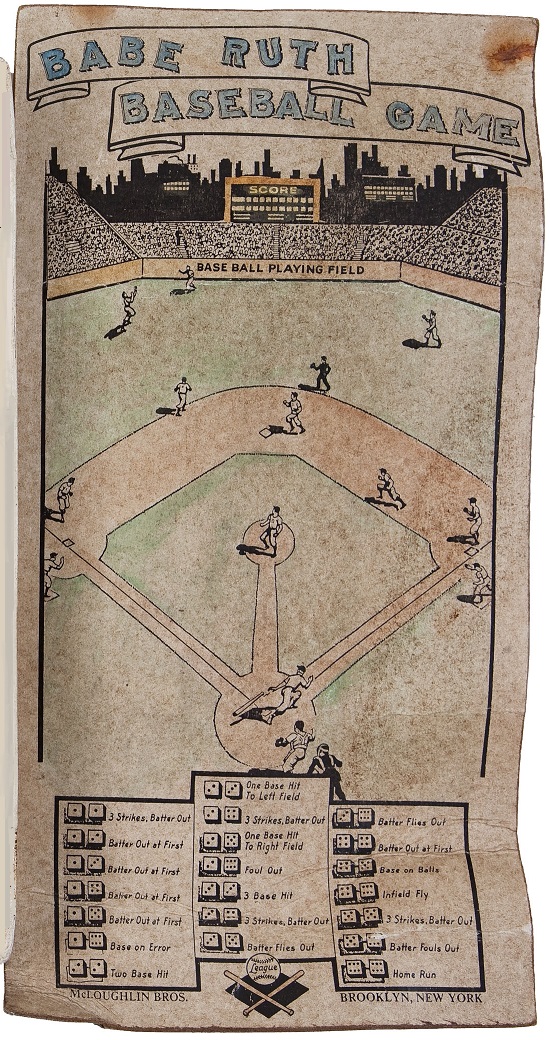 |
 |
Whoever created these things, you have to give them points for
their efforts at recycling. Another fantasy piece surfaced, using
many of the graphic elements seen in the boards above and from
the same sources whence those were copied. In this "Babe Ruth
Baseball Game," the title banner is identical to that in the above
examples, and the bleachers and the cityscape beyond, as well as
the crossed-bats logo at the bottom, are all taken from the same
Parker Brothers game that was sourced for the playing field. The
image of the Babe is another iconic one -- this one might be drawn
by hand from the photo source, bringing us back to our "art student"
theory -- and again the tinted portions of the board appear to be
hand-coloured.
Most tellingly, the numbered play results -- as with the incomplete
dice combinations in the first three examples -- make no sense
whatsoever -- 2, 3, 6, 7, and 8 each appear twice, redundantly,
4 and 5 just once each, and 1 does not appear at all. If this were
a spinner game, there can be no reason to have numbered the
results this way; if it were a two-dice game, which would account
for the absence of the "1" result, it would require tetrahedral dice,
unheard of in its purported era, numbered 1 through 4, and hitting
would come in at around an .833 clip, beyond the pale even for the
offense-juiced children's games of the day, with the relatively rare
triple being the most common result. Either way, it would have
been senseless for a "real" game company to have listed five of
the combinations twice and two only once.
|
The parade of phonies continues, red flags flying and jingtinglers,
gardookas, and great big electro whocarnio flooks blaring, with the
item at right. Once again using the Double Game Board graphics,
this "Babe Ruth Baseball" suggests more of an "action" game,
implying that some sort of projectile -- a marble or small puck --
is to be struck into one of the holes in the playing field, presumably
propelled by a miniature bat or flicked by a finger. It uses the same
typography as the game discussed just above, both in the title and
in labelling the results, and again appears to be hand-coloured,
although the sandlot plank fence drawn around the inside of the
box aprons is a thoughtful touch. The holes -- five to be targeted,
four to be avoided -- are decorated with spiked outlines, suggestive
of impact or explosion, a graphic device generally not seen in
cartoon illustration until the 1950s. And the holes themselves
are not die-cut, as they would be in a game made by a legitimate
publisher, but appear to have been gouged out with the use of
a dull screwdriver or a grapefruit spoon. In a hilarious fit of
desperation, the vendor claimed this was a McLoughlin Brothers
product. If the abyssal distance in quality between these
fantasy pieces and any McLoughlin product is not convincing
evidence that these are fakes (again, compare the McLoughlin
line at our page here), remember that McLoughlin had basically
gone out of business by 1920, just before the Babe had really
even established himself as baseball's star slugger.
The topper, so to speak, may be the ridiculous item seen below,
which showed up on eBay in the summer of 2017. The vendor had
the gall to claim this 2 7/8"-diameter gimcrack was a "1920" product,
all the more valuable because it pictured the Babe as a Red Sox
slugger and was partly made of an "early plastic."
In fact, the picture is of the Bambino, crudely photocopied from
the photo shown farther below, which was taken in 1918. Up until
1920, the Babe was best known as one of the very best young lefty
pitchers in baseball. It wasn't until 1920 that he became recognized
as baseball's prepotent offensive force. But he did it as a Yankee,
Boston having sold him to New York at the end of the previous year.
That he would have endorsed a game that pictured him as still a
member of the Red Sox seems a dubious notion.
What really convicts the piece below as inauthentic, though, are
the graphical elements that repeat from the item directly at right,
which features other elements already repeated there from the
1948-and-later Parker games. There's the title banner, and the
clumsy font labelling the anachronistic "impact" spikes. Again,
the target holes are roughly hacked into the surface, rather than
die-cut, and there's no glass cover to keep the BB in play.
The plastic jar-lid liner begs for attention as well. The basic
chemical principles of plastics were known as long ago as 1839,
but the development of modern plastics for practical use took
nearly another century.
| 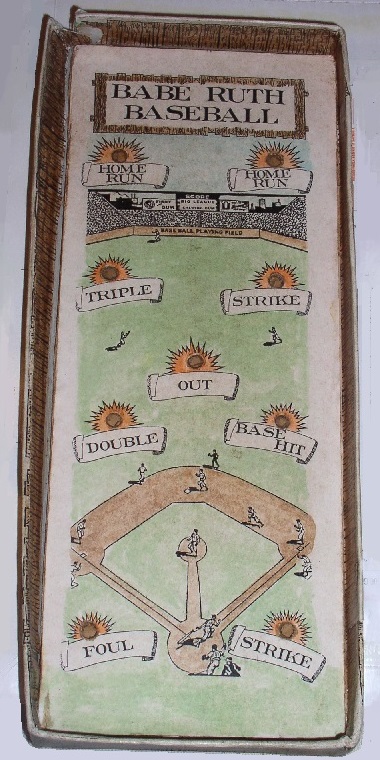 |
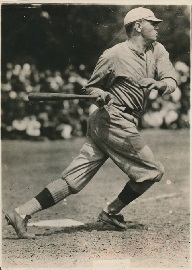 |
Modern synthetic plastics, ubiquitous and omnipresent today in countless forms, were not really even
developed until World War II -- and definitely not in common use, certainly not for anything as trivial
as toys, until after the war. So the claim that this item, with its plastic-lined jar-lid, dates from 1920 is
patently ridiculous.
The pathetic punchline to this joke is that someone was suckered into shelling out over 360 bucks
for this silly thingamabob on eBay in August 2017. Ouch. "But wait -- there's more!" Several weeks
later, the buyer tried to turn it around on eBay at $1,800. -- $1,800.! No takers, happily, but then, in
March -- turpem dictu! -- it did sell for something close to $800. How often is a sucker born?
As merely a preposterous fake, it was as amusing as it was annoying, but that somebody profited
big-time with it (well, big-time by the standards of our own minuscule budgets) got us kinda riled up.
We decided to demonstrate how easy it was to have created this nasty little thing. None of us in the
Baseball Games front office have any experience with craft projects or fakery, so if, with negligible skill
and just minimal time and effort, we could come even reasonably close to duplicating the cursed object
above, it's something anyone could do. In a moment, the results of that trial. Your comments on our
project are welcome at our Forum.
Ingredients needed for this recipe: 1 jar lid, internet access to clip-art graphics, 1 photo of the Babe,
razor knife, printer, copy machine, white-out and a brush, tea, oven, cardboard, glue, awl, 1 BB.
|
The lid itself, in fact, was the only difficult thing to replicate. The lid used in the fake dexterity game may actually have some age to it
-- which doesn't for a moment mean the fake game is anywhere near as old as it pretends. You, we, almost everyone, has some old jar
of something in the garage or the basement. We wasted a few man-hours strolling supermarket aisles in search of the closest match
we could find, thinking the lid came from a jar of something edible. You and we have all seen a million lids sort of like this on tens of
thousands of food products, the plastic liner being the only anomalous feature. That modern liner aside, though, the lid is a bit unusual
in that it has no writing, the sides are flat, with no incised screw-top lines, ribbing, or dimples, nor, most notably, does it show the four
crimped spots at the rim that are present on about 95% of modern food-jar lids. You can find dozens of food products with lids exhibiting
four of the five key elements -- 2 7/8" diameter or thereabouts, gold color, no writing, no indentations on rim, no crimping -- but good luck
finding one that sports all five, let alone one with a plastic liner.
The creator of the fake didn't have to match anything, though -- he just grabbed a lid at random, while we were trying to find a needle
in a haystack. It dawned on us that the lid could have come from a jar -- or can -- of anything, not necessarily food. Maybe it came
from a jar of pills, or skin cream, or some commonplace middle-school thing like a jar of school paste or tempera paint, or maybe it's the
bottom half of a tin of shoe polish. If you can match it perfectly, let us know what it belongs to. And see if you can guess the source of
the lid we (not keen on wasting more time in search of a perfect match) wound up settling for. We'll reveal it at the end of this article.
The same sort of trouble is inherent in matching the title border, the little banners, the impact blasts, and the type face. There are
a million bazillion examples of each of those things in the thousands of clip-art sites on the internet, but again, disinclined to waste
too much time and effort, we contented ourselves with just a fair approximation of the graphics. We're sure you can get a closer match
if you want to try replicating the thing yourselves.
The next step, then, is to find those graphics on the web, plus that 1918 photo of the Babe. Save the images, calculate the size they
should be on the fake game, and either reduce them to the proper measurements in your computer graphics programme, or just adjust
their proportions to the correct sizes relative to one another. Print 'em out, cut 'em apart, and assemble them as they appear on the fake.
Use illustrator's white-out (like Pro White or a white gouache) or your computer graphics programme to mask the cut-lines and any stray
black or grey marks on the scan. Reduce that "paste-up" (as they say in the graphics-and-printing biz) to the final correct size on your
computer or on a copy machine. Print out several copies -- you'll probably need to do some trial-&-error experiments in the next step.
Take a break and fix yourself a lovely cup of tea. Real weak tea. Soak one of the print-outs with the tea. Strengthen the tea a bit
and soak another copy with that darker mix. Try a few different shades. Let 'em dry. Now put 'em on a cookie sheet or something and
toss 'em in the oven at a low bake for a minute or three. Actually, we're writing this as Christmas approaches, and it occurred to us that
some watered-down dregs from a mug of hot cocoa might also be worth a try as a colouring agent, so that's what we used.
While you're waiting, cut out a piece of corrugated cardboard, or several pieces of shirt-box / cereal-box cardboard, to the diameter
of your jar lid.
Smear a very thin coating of glue or rubber cement on the cardboard disc, then center your tea-coloured playing surface over it and
attach it. Give it a few minutes to dry, then punch holes in the appropriate spots using an awl (there's probably one in your Swiss Army
knife), or a knitting needle, or, if your cardboard is fairly flimsy, even a toothpick might do the trick. Ream the holes to a workable size.
Once you're satisfied they'll stop, but not trap, the BB, snap the whole disc arrangement into your jar lid. Drop in a BB. You're done.
Now photograph your handiwork, auction it off on eBay, and collect 300 bucks. No, wait, sorry -- don't do any of that. It would be
evil and disgusting and you'd be a total creep who shouldn't be able to look at himself in a mirror.
We'll reveal now that our lid is from a large decorative scented candle, and that was our biggest, almost only expense -- we got one
on sale for about seven bucks. Beyond that, we already had the computer and printer/scanner, obviously, but if you don't have your own,
you can achieve the same results with only a few additional steps by using the copy machine at your local library, which should cost you
something like 15 cents a copy. Kerm and Butch here in the Baseball Games front office already had the art supplies, but if you don't
have those things on hand, the white-out is cheap (even typists' correction fluid might do in a pinch) and a sharp pair of scissors and
a steady hand can substitute for the Xacto knife. Kerm's wife provided the tea, Win's grandkids provided the BBs.
Total cost of this project: basically the seven bucks for the candle's lid, ninety cents for the use of our library's copier while our
front-office printer was out of commission, and whatever few cents a couple of teabags or a packet of cocoa mix cost. For you, maybe
another five-ten bucks for art supplies, but household items already on hand should do well enough without incurring any new cost at all.
Here ya go, then -- the original fantasy piece on the left, our finished product on the right. Forensic examination will confirm we didn't
match it perfectly -- the plastic liner the most obvious disparity, and theirs has been worked a little harder into a state of grundginess
-- but seriously, making the thing from scratch and investing minimal time and effort, did we come close or didn't we? If they'd used
the photo of our piece of junk instead of the photo of their piece of junk and made the same "1920 rarity" claim, would ours have fooled
anyone as theirs did, or not?
That was a sick sort of fun. We may update this article, not too far down the road, with another absurd fantasy piece of our own
creation. Check back in a few weeks. In the meantime -- do your research, know your stuff, don't be a sucker for a scam!
|
|
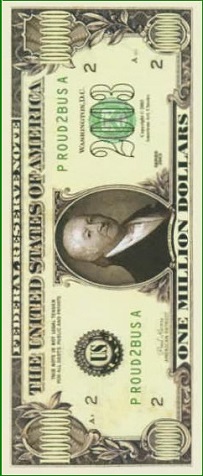
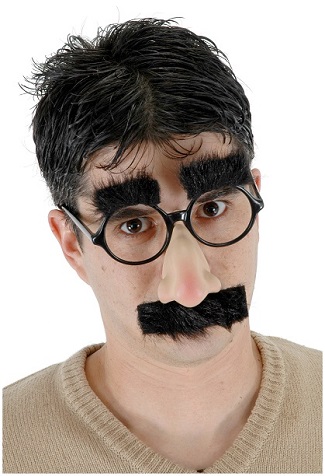
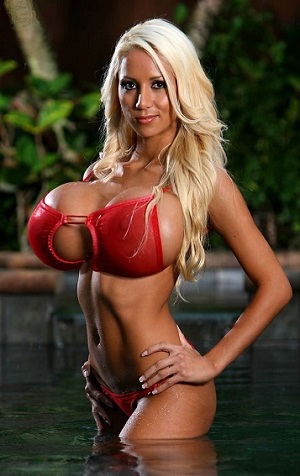












 These fake antique game-box lids showed up on eBay in January 2018. The least little bit of research would have demonstrated that
they are not authentic. All anyone needed to know was that an original Big Six box is a big 22 1/2 x 16", while an original National League
Ball Game box is a just slightly smaller 5 1/2 x 4 1/2". The second pair displays similarly wild inconsistencies in size, and several other
details in all four lids make it further inarguable that all four are outright fakes. Yet someone deluded themselves into paying more than
$320. for this set of worthless decorations. Well, okay, as decorative pieces, not entirely worthless. Maybe eight or ten bucks for the set.
These fake antique game-box lids showed up on eBay in January 2018. The least little bit of research would have demonstrated that
they are not authentic. All anyone needed to know was that an original Big Six box is a big 22 1/2 x 16", while an original National League
Ball Game box is a just slightly smaller 5 1/2 x 4 1/2". The second pair displays similarly wild inconsistencies in size, and several other
details in all four lids make it further inarguable that all four are outright fakes. Yet someone deluded themselves into paying more than
$320. for this set of worthless decorations. Well, okay, as decorative pieces, not entirely worthless. Maybe eight or ten bucks for the set.



